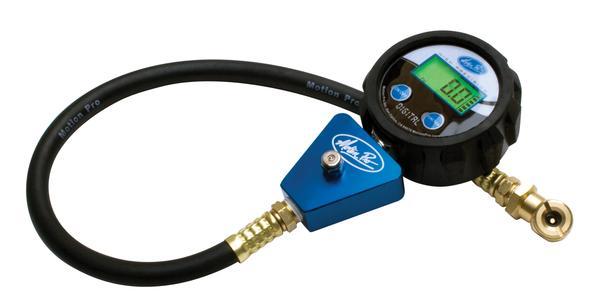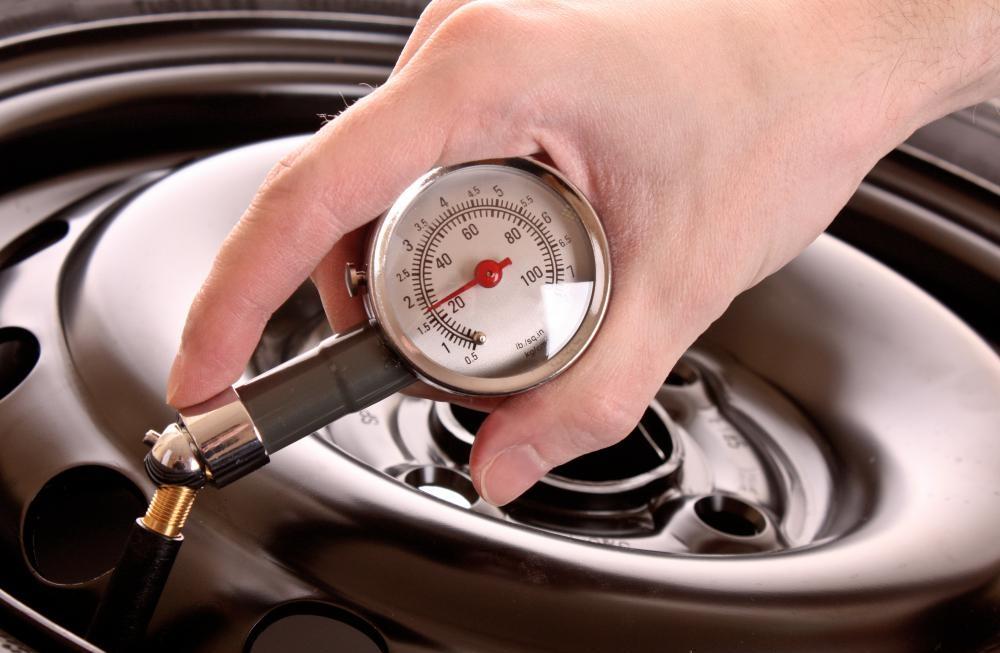When maintaining a car, calibrating a tire pressure gauge is quite important. Misreading may lead to technical difficulties like a blown tire. And when you are driving at speed, a burst tire could be disastrous.
So, make sure your tires’ air pressure is at the correct level. Calibrating a tire pressure gauge takes a little time.
Contents
Materials Needed:
- Lots of water
- 25 meters long hose pipe
- A 25 meters or higher building
- A marker pen
- Someone to help
- A tire pressure gauge
- 25m tape measure
Step 1 – Mark The Hose
Unwind and untie the measuring tape to no less than 25m and place it beside the hose. Now, use the marker pen to mark down points indicating every meter, and, specifically, the 25m, 20m, and 10m points.
Step 2 – Go on Top of the Building
Now standing on top of the building, unravel the hose. Try to keep the hose kink-free and straight as much as possible. Now connect the end of the hose to the tire pressure gauge at ground level.
Step 3 – Check the Calibration
Gradually fill the hose until it reaches the 1 m point. The appropriate reading should be 1.4223 PSI.
If the reading in the gauge seems accurate, continue filling. Each and every meter of water will raise the PSI by 1.4223. To reduce hassles, you can follow the chart below:
- 10m – 14.2 PSI
- 20m – 28.4 PSI
- 25m – 35.5 PSI
Step 4 – Recalibrate the Gauge
Even after reaching the first-meter mark if you find the gauge reading to be nowhere near the 1.4223 PSI, then recalibrate and restart from step 2. And if it seems impossible to recalibrate, then the tire pressure gauge must be faulty. Replace it.
Step 5 – Shorter Hose
If you are using a shorter hose, then it is possible to get the job done without too much water, high-rise buildings, and people.
The only setback is it will decrease accuracy significantly – as a 3 meters gauge can’t maintain enough accuracy equate the one with 25 meters.
Unless you don’t have all the resources required for pressure gauge calibration, don’t use the shorter hose.
Step 6 – Gas Station Gauges
Many simply rely on gas station gauges, but they are unreliable, for the reading varies. The other option open to you is digital tire pressure gauges.

But some of them are accurate, and some are not. Do all relevant homework online or offline beforehand before you proceed to buy a digital gauge. Last but not least, you can have the gauge calibrated by someone professional for a fee.
FAQs on Calibrating a Tire Pressure Gauge
-
What is the cost of professional calibration for a tire pressure gauge?
The cost of professional calibration can vary depending on your location and the service provider. It may range from $10 to $50 or more, but it’s advisable to obtain quotes from local calibration centers.
-
Are there any DIY methods to check the accuracy of a tire pressure gauge at home?
You can perform a basic check of your gauge’s accuracy using a known reference pressure, such as a recently calibrated gauge or a high-quality tire pressure gauge. Compare the readings to identify any discrepancies.
-
Can I calibrate a tire pressure gauge myself if I have technical knowledge and equipment?
If you have the necessary technical knowledge and calibration equipment, you may attempt to calibrate some digital gauges. However, for precise results, professional calibration is recommended.
-
How do I know if my tire pressure gauge has been successfully calibrated?
Successful calibration is indicated when your gauge consistently provides accurate readings that match a known reference pressure. Conduct multiple tests to ensure consistency.
Check out this video from Engineering Explained to see how tire pressure affects grip, fuel economy, and wear!
-
Is there a specific calibration interval recommended for tire pressure gauges?
While there’s no fixed interval, it’s wise to calibrate your gauge whenever you suspect inaccuracies or at least every few months to maintain reliable readings.
-
Can I use a tire pressure gauge immediately after calibration, or is there a waiting period?
In most cases, you can use the gauge immediately after calibration. However, it’s a good practice to confirm its accuracy with a few test measurements before relying on it.
-
Can I calibrate a tire pressure gauge for different pressure ranges, such as high-pressure or low-pressure readings?
Some calibration tools are designed for specific pressure ranges. Ensure that your chosen calibration tool is compatible with the range you need for your gauge.
-
Can I use a tire pressure gauge without calibration and still get reasonably accurate readings?
While a gauge may provide reasonably accurate readings without calibration, it’s best to periodically calibrate it to maintain precision and ensure consistent performance.
Conclusion
In short, calibrating a tire pressure gauge is a simple yet essential maintenance task that should not be overlooked.
Ensuring the accuracy of your gauge is paramount to maintaining proper tire inflation, which, in turn, contributes to vehicle safety, fuel efficiency, tire longevity, and overall performance.




Hi,
Just for information, If we purchase new Tire pressure gauge , is that required calibration or after certain time it needs to be calibrate regularly.
Shah
You won’t receive an answer. Saw this almost exact same post somewhere else with a few words changed here and there.
@Shah, new gauge should not require calibration but things that would affect its accuracy: dropping it, very low tempertures < -5C, buying those cheap keychain type gauges.